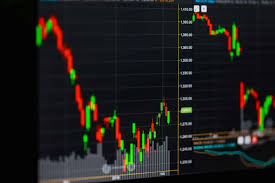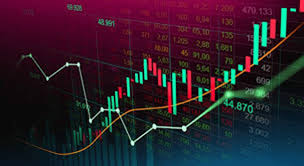
Are you ready to dive into the fascinating world of forex trading? If so, you might want to consider enrolling in a comprehensive forex trading school that will equip you with the necessary skills and knowledge to navigate this fast-paced market. One such resource is forex trading school LATAM Trading Brokers, which can provide valuable tools and insights for both novice and experienced traders. Understanding the fundamentals is crucial, and this article will serve as your introductory guide to forex trading, offering various tips, strategies, and valuable resources that will lead you to success.
What is Forex Trading?
Forex trading, or foreign exchange trading, involves buying and selling currencies on the global market. Unlike stock trading, the forex market operates 24/5, allowing traders to engage in transactions at any time. The primary purpose of forex trading is to speculate on currency price movements to make a profit. This market is the largest and most liquid in the world, with an average daily trading volume exceeding $6 trillion.
Why Enroll in a Forex Trading School?
Enrolling in a forex trading school offers several advantages:
- Structured Learning: Unlike self-study, which can often be overwhelming and disorganized, a formal trading school provides a structured curriculum designed to take you from beginner to advanced levels.
- Mentorship: Many forex trading schools offer mentorship programs, where experienced traders guide you through complex topics and strategies.
- Access to Resources: Comprehensive trading resources such as webinars, articles, and trading platforms can be invaluable in your learning process.
- Networking Opportunities: Engaging with fellow students and instructors can help you form alliances and learn collaboratively.
Key Components of Forex Education
A well-rounded forex trading curriculum typically includes the following components:
1. Understanding Currency Pairs
Forex trading always involves trading currency pairs, such as EUR/USD or GBP/JPY. Understanding how different currencies correlate with one another, and the factors that influence their movements, is fundamental to developing a trading strategy.
2. Technical Analysis

Technical analysis involves studying price charts and using various indicators to predict future price movements. Tools such as moving averages, RSI, and Fibonacci retracements are critical for identifying potential trade opportunities.
3. Fundamental Analysis
In addition to technical analysis, understanding macroeconomic factors, such as interest rates, inflation, and geopolitical stability, is essential. These factors can greatly influence currency prices.
4. Risk Management
Managing your risk is one of the most crucial aspects of trading. Learning how to set stop losses, diversify your portfolio, and calculate position sizes can prevent you from significant losses.
5. Trading Psychology
The psychological aspect of trading cannot be overlooked. Emotions like fear and greed can lead to poor decision-making. A good forex trading school will address the importance of maintaining discipline and a rational mindset when trading.
Choosing the Right Forex Trading School
Not all forex trading schools are created equal. Here are some tips for selecting the right one:
- Research: Look for reviews and testimonials from former students to gauge the efficacy of the program.
- Cursory Curriculum: Ensure that the curriculum covers all essential aspects of trading, including both technical and fundamental analysis.
- Instructors‘ Credentials: Investigate the backgrounds of the instructors to verify their expertise and trading experience.
- Support Services: Look for schools that offer ongoing support after the course is completed, which might include mentorship or access to trading communities.
Popular Trading Strategies
Upon completing a forex trading course, you will likely encounter various trading strategies. Some popular strategies include:
1. Day Trading
Day trading involves buying and selling currencies within the same trading day. This strategy requires a keen understanding of market movements and quick decision-making.
2. Swing Trading
In swing trading, traders hold onto a position for several days or weeks, aiming to capitalize on expected price movements. This method requires the ability to analyze charts over more extended periods.
3. Scalping
Scalping is a high-frequency trading strategy where traders make numerous small profits from minor price changes throughout the day. It typically requires significant time and focus.
Staying Updated: Continuous Learning
The forex market is dynamic; therefore, continuous learning is essential for long-term success. Engage with resources such as books, podcasts, and online forums to stay abreast of new developments in the industry. Regularly practicing on demo accounts before committing real capital can also boost your confidence and skill level.
Conclusion
Forex trading can be a rewarding but complex endeavor. A forex trading school can provide the essential education, tools, and support necessary to guide you on your journey. By understanding the fundamentals, mastering key strategies, and managing your risks effectively, you can increase your chances of success in the forex market. Remember, the path to becoming a proficient trader is ongoing—dedication, continuous learning, and practice are crucial as you navigate this exciting financial landscape.

Nejnovější komentáře